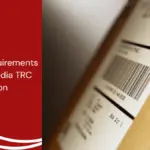Wavelength division multiplexing (WDM) is essential device that evolving data transmission landscape and the growing demand for higher bandwidth.
With the increasing use of wavelength division multiplexing technology, the Indonesian government through Decree of the Minister (KEPMEN) No. 6 Tahun 2023 from the Ministry of Communication and Digital (KOMDIGI) has established wavelength division multiplexing testing standards to ensure that these devices are safe, efficient, and do not interfere with each other.
This regulation is intended to ensure that all wavelength division multiplexing devices circulating in Indonesia must ensure their quality, safety, and compliance with applicable regulations through testing standards.
Also Read
Table of Contents
Wavelength Division Multiplexing Testing Standard

Before being used or marketed in Indonesia, wavelength division multiplexing devices must meet several established technical requirements. Here are some of the standards that must be met:
Power Supply
For WDM telecommunication devices with AC power supply, the WDM telecommunication device must operate normally with 220 v power supply of approximately 10% and 50Hz frequency of approximately 6%.
In case the WDM telecommunication device uses an external power supply, such as an AC adapter, the power supply shall not affect the operation capability of the WDM telecommunication device.
Electromagnetic Compatibility (EMC)
EMC measurements on WDM are divided into two, namely, emission and immunity measurements. The following is an explanation of the measurements.
- EMC Emission: Measurements refer to CISPR 32, which measures emissions on devices used in residential areas and non-residential areas.
- EMC Immunity: Measurements must meet the requirements of CISPR 35.
Electrical Safety
The electrical safety assessment of WDM telecommunication devices shall meet the requirements specified in IEC 60950-1 or IEC 62368-1. WDM telecommunication devices are supplied with a dedicated external power supply and operate with SELV, referring to voltages that do not exceed 42.4 V peak or 60 V DC.
Laser Safety
Lasers used in the optical interfaces of WDM telecommunication devices (transponders and multiplexers/demultiplexers) must meet Class 1 or Class 1M requirements under IEC 60825-1, and the optical interfaces on amplifiers must meet IEC 60825-2.
Interface Interoperability Requirements
The WDM telecommunication device system consists of transponders, multiplexers/demultiplexers, and optical amplifiers that can be a single WDM device or separate, with the following conditions:
- Transponder: Must have tributary interface and optical line interface for CWDM and DWDM.
- Multiplexer/Demultiplexer: Must conform to the ITU-T Rec. G.695 for CWDM and ITU-T Rec. G.698.1 and/or ITU-T G.698.2 for DWDM.
- Optical Amplifier: Must conform to the standards of ITU-T Rec. G.691 for CWDM systems and ITU-T Rec. G.692 for DWDM systems.
Testing Methods
Testing of WDM devices is carried out based on test methods published by relevant international Standards Developing Organization (SDO), and/or test methods developed and validated by accredited test centers.
Wavelength Division Multiplexing Type Approval and Certification Process in Indonesia

For wavelength division multiplexing interface devices to be used legally in Indonesia, certification from DJID is required. Here are the steps to get it:
Pre-testing the device
Before official testing, the device must be pre-tested first using measuring equipment such as a spectrum analyzer.
This helps ensure devices meet technical standards before being tested in authorized laboratories.
Testing at an official laboratory
After passing the pre-testing, the gadget will be sent to an assigned official research facility to experience testing according to the guidelines stipulated in the Ministerial Decree of the Ministry of Communication and Digital No. 6 Tahun 2023.
Issuance of certificates
After the device passes testing, an official certificate will be issued by DJID. This certificate is a requirement to market the device legally in Indonesia.
Tips to ensure standards compliance
- Learn the latest regulations: Make sure you understand every detail of the Ministerial Decree of the Ministry of Communication and Digital No. 6 Tahun 2023, including technical requirements and test methods.
- Perform pre-testing: Before official testing, perform pre-testing to ensure the device meets standards. If you don’t have a measuring instrument, use the DJID certification service which provides pre-testing services.
- Counsel a master: If this is your to begin with time looking for certification, consider utilizing the services of experienced DJID certification administrations. <UN>
















